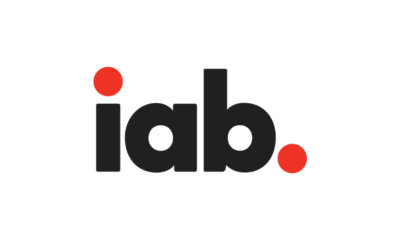Advertising
The Real-Time Magic: How Ads are Shown in Real-Time

Introduction
In the fast-paced world of digital advertising, the ability to serve ads in real-time has revolutionized the way marketers connect with their target audiences. Real-time ad serving ensures that the right ad is shown to the right user at the right moment, maximizing the effectiveness of advertising campaigns. In this article, we will delve into the intricacies of real-time ad serving, exploring the processes and technologies that enable this seamless and dynamic ad delivery.
Understanding Real-Time Ad Serving
Real-time ad serving refers to the process of delivering ads to users in immediate response to their online activities. It involves a series of complex steps that take place within milliseconds, enabling advertisers to make data-driven decisions and serve highly relevant ads. Here’s an overview of how real-time ad serving works:
- User Triggered Events: Real-time ad serving starts when a user interacts with a website, app, or other digital platforms. This interaction could include page loads, clicks, searches, or any other action that triggers an ad opportunity.
- Ad Request: When an ad opportunity arises, the publisher’s ad server sends a request to an ad exchange or supply-side platform (SSP). This request contains information about the user, such as their demographics, browsing behavior, and context of the page or app content.
- Auction and Bidding: Upon receiving the ad request, the ad exchange or SSP conducts a real-time auction, inviting multiple advertisers to bid for the available ad impression. Advertisers submit their bids, indicating the maximum amount they are willing to pay for the opportunity to display their ad to the specific user.
- Targeting and Decisioning: To determine the most suitable ad to display, the ad exchange or SSP considers various factors such as the bid price, relevance of the ad creative, targeting parameters, and campaign goals. Sophisticated algorithms and machine learning techniques are often employed to make these decisions.
- Ad Selection and Delivery: Once the auction is complete, the winning ad is selected based on the highest bid or other performance-related criteria. The ad is then sent back to the publisher’s ad server, which in turn delivers it to the user’s device.
- Ad Rendering: The user’s device receives the ad and renders it within the designated ad slot on the webpage or app. The ad is displayed to the user, typically accompanied by relevant content.
Benefits of Real-Time Ad Serving
- Increased Relevance: Real-time ad serving enables advertisers to leverage user data and contextual information to deliver highly relevant ads. This relevance enhances user experience, increases engagement, and boosts the chances of ad conversion.
- Dynamic Ad Optimization: Real-time ad serving allows advertisers to continuously optimize their campaigns based on real-time data and user responses. This flexibility enables them to adjust targeting, creative elements, and bidding strategies on the fly, maximizing campaign performance.
- Efficient Resource Allocation: By conducting real-time auctions, advertisers can allocate their advertising budgets more efficiently. They can prioritize ad placements that yield better results and optimize their spending in real-time based on performance metrics and user responses.
- Timely Campaign Delivery: Real-time ad serving ensures that ads are delivered promptly, aligning with the user’s immediate interests and needs. This timeliness enhances the impact and effectiveness of advertising efforts.
Conclusion
Real-time ad serving has transformed the digital advertising landscape by enabling marketers to deliver personalized, relevant, and engaging ads to their target audiences. Through sophisticated algorithms, data-driven decisioning, and real-time auctions, advertisers can optimize their campaigns, allocate resources efficiently, and deliver ads that resonate with users. As technology continues to advance, real-time ad serving will undoubtedly play a pivotal role in shaping the future of digital advertising, empowering marketers to create meaningful connections with their audiences
Reference from iab: link
Read more on: www.iabuk.com
Ad Tech
What is Ad Stitching?

Ad stitching, also known as server-side ad insertion (SSAI), is a technology that allows publishers to insert ads into video content on the server-side, before the content is delivered to the viewer. This is in contrast to client-side ad insertion (CSAI), which inserts ads on the viewer’s device.
Ad stitching has a number of advantages over CSAI, including:
- Reduced ad blocking: Ad blockers typically work by blocking ads that are delivered to the viewer’s device. Since ad-stitched ads are inserted on the server-side, they are not visible to ad blockers.
- Improved performance: Ad stitching can improve the performance of video content by reducing the amount of data that needs to be transferred to the viewer’s device. This is because the ads are already stitched into the content stream, so they do not need to be downloaded separately.
- Greater control: Publishers have more control over the ad experience with ad stitching. For example, they can choose where ads are placed in the content, and they can ensure that the ads are compatible with the content.
How Does Ad Stitching Work?
The process of ad stitching typically involves the following steps:
- Prepare the content and ads: The content and ads are prepared for insertion. This may involve encoding the content and ads in a compatible format, and adding markers to the content stream to indicate where the ads should be inserted.
- Insert the ads into the content stream: The ads are inserted into the content stream at the designated locations. This is done on the server-side, before the content is delivered to the viewer.
- Deliver the stitched content to the viewer: The stitched content, which includes both the content and the ads, is delivered to the viewer.
The Benefits of Ad Stitching
Ad stitching offers a number of benefits for both publishers and viewers. For publishers, ad stitching can:
- Increase ad revenue by reducing ad blocking
- Improve the performance of video content
- Give publishers more control over the ad experience
For viewers, ad stitching can:
- Provide a more seamless viewing experience
- Reduce buffering and loading times
- Ensure that ads are relevant to the content
The Future of Ad Stitching
Ad stitching is a relatively new technology, but it is already having a significant impact on the online video advertising industry. As ad blocking continues to grow, ad stitching is likely to become even more important for publishers. In addition, ad stitching is being used for other applications, such as inserting personalized content into video streams. As ad stitching technology continues to develop, it is likely to become an even more important tool for publishers and viewers alike.
I hope this blog has been helpful. Please let me know if you have any questions.
Advertising
Supercharge Your WordPress Ads with Advanced Ads: The Ultimate Guide

Monetizing your WordPress website can be a rollercoaster. You pour your heart into creating content, but those ad clicks just don’t seem to match your dedication. Enter Advanced Ads, a game-changer in the WordPress ad management arena. This plugin isn’t just about slapping banners on your site – it’s about laser-targeting your audience, maximizing revenue, and taking control of your ad game.
Why Choose Advanced Ads?
Forget the clunky, limited ad plugins of the past. Advanced Ads brings a powerful feature set to the table, making it the Swiss Army Knife of WordPress ad management:
Precise Targeting: Go beyond simple location-based targeting. Reach specific user groups based on their behavior, demographics, and even device! Imagine showing travel ads only to users who recently browsed flight prices.
Ad Scheduling and Rotation: Control when and where your ads appear. Rotate different ads to keep things fresh and prevent ad fatigue.
Advanced Ad Formats: Ditch the boring banners. Utilize diverse formats like sliders, pop-ups, and sticky ads to engage your audience in unique ways.
Click Fraud Protection: Don’t let bots steal your revenue. Advanced Ads employs sophisticated measures to weed out fraudulent clicks and ensure your earnings are legit.
Detailed Reporting and Analytics: Track your ad performance with comprehensive reports. See what’s working, what’s not, and optimize your strategy for maximum impact.
But Wait, There’s More!
The free version of Advanced Ads is already impressive, but the pro version unlocks a whole new level of ad mastery:
- Ad Server Integration: Deliver ads from external ad servers like Google AdSense or custom networks for even more flexibility.
- Advanced Geo-Targeting: Target users based on their precise location, down to city or postal code.
- A/B Testing: Experiment with different ad formats, placements, and creatives to see what resonates best with your audience.
- Dynamic Ad Injection: Automatically insert ads into your content based on specific keywords or triggers, creating a seamless ad experience.
Is Advanced Ads Right for You?
Whether you’re a seasoned blogger or a newbie entrepreneur, Advanced Ads has something to offer. It’s perfect for:
- Website owners who want to maximize their ad revenue. Content creators who want to present targeted and engaging ads to their audience.Marketing professionals who need a powerful tool for managing ad campaigns.Anyone who wants to take control of their WordPress ad experience.
Launch a demo: Link
Ready to Take the Plunge?
Head over to the Advanced Ads website and download the free plugin to start your journey. There’s also a helpful documentation section and a vibrant community forum to answer your questions and guide you through the process.
So, ditch the ad-placement woes and unlock the full potential of your WordPress website with Advanced Ads. Remember, with the right tools and strategies, your website can become a powerful revenue machine, and Advanced Ads is the key to making it happen.
Link to advanced ads
Advertising
Chrome Says Cookie Crumbles: What You Need to Know about the Phase-Out

The internet is on the cusp of a major shift, and at the heart of it is Google Chrome’s decision to phase out third-party cookies. These tiny bits of data, long the workhorses of online advertising, are about to become relics of a bygone era. But what does this mean for you, the everyday web user? Buckle up, because we’re diving into the cookie jar to understand the implications of this sweet (or perhaps bitter) change.
Why the Cookie Crumble?
Third-party cookies have been under fire for years for their role in intrusive online tracking. They enable advertisers and other companies to follow your every click across the web, building detailed profiles used to target ads and personalize your experience. While this can be convenient at times, it also raises concerns about privacy and data rights.
Chrome, recognizing these concerns, is leading the charge towards a more privacy-focused web. Their goal is to replace third-party cookies with alternative solutions that allow for relevant advertising and personalized experiences without compromising user privacy.
The Timeline of Cookie Crumbling
The phase-out isn’t happening overnight. It’s a gradual process, unfolding in stages:
- Phase 1: Testing the Waters (January 2024): Currently, 1% of Chrome users globally are experiencing the cookie-less future firsthand. This testing phase allows websites and developers to adapt their practices and prepare for the wider rollout.
- Phase 2: The Rollout Begins (Late 2024): Expect to see a wider implementation of cookie restrictions throughout the latter half of 2024. This is where the impact for regular users might become more noticeable.
- Phase 3: Farewell, Third-Party Cookies (2025 and Beyond): By 2025, barring any unforeseen delays, we should see the complete removal of third-party cookies in Chrome. The new era of privacy-focused advertising and web experiences will be fully upon us.
What Does This Mean for You?
You might encounter some changes as the cookie era winds down. Here’s a glimpse:
- Fewer Targeted Ads: Prepare for less personalized ad experiences. While ads might still appear, they might be less relevant to your interests.
- Login Headaches: Websites that rely on third-party cookies for logins might require you to log in more frequently.
- Privacy Boost: You can breathe a sigh of relief knowing your online activity is being tracked less extensively.
The Future of the Web Cookie-Less
The phase-out of third-party cookies isn’t just about privacy. It’s about reshaping the internet into a more user-centric space. While challenges lie ahead, this shift holds the potential for a web that respects your privacy while still offering valuable experiences.
So, stay tuned as the cookie crumbles! The internet is in for a delicious makeover, and how it will taste… well, that remains to be seen. But one thing is certain: it’s time to ditch the cookie crumbs of the past and embrace a sweeter, more private future online.
Download Chrome here
-

 Ad Tech1 year ago
Ad Tech1 year agoWhat is Ad Stitching?
-

 Featured1 year ago
Featured1 year agoHow to find TCF String – Chrome Network Tab?
-

 1 year ago
1 year agoHow to verify TC String’s origin from a CMP participating in the IAB Transparency and Consent Framework (TCF)
-

 1 year ago
1 year agoConquering the Living Room: Top 5 Ad Servers for CTV Domination in 2024
-

 Ad Tech1 year ago
Ad Tech1 year agoAI on Advertising
-

 1 year ago
1 year agoCutting the Cord, Not the Ads: How OTT Advertising Works
-

 Advertising1 year ago
Advertising1 year agoChrome Says Cookie Crumbles: What You Need to Know about the Phase-Out
-

 Advertising2 years ago
Advertising2 years agoUnderstanding the IAB Content Taxonomy: Categorizing Content for Enhanced Advertising Relevance






